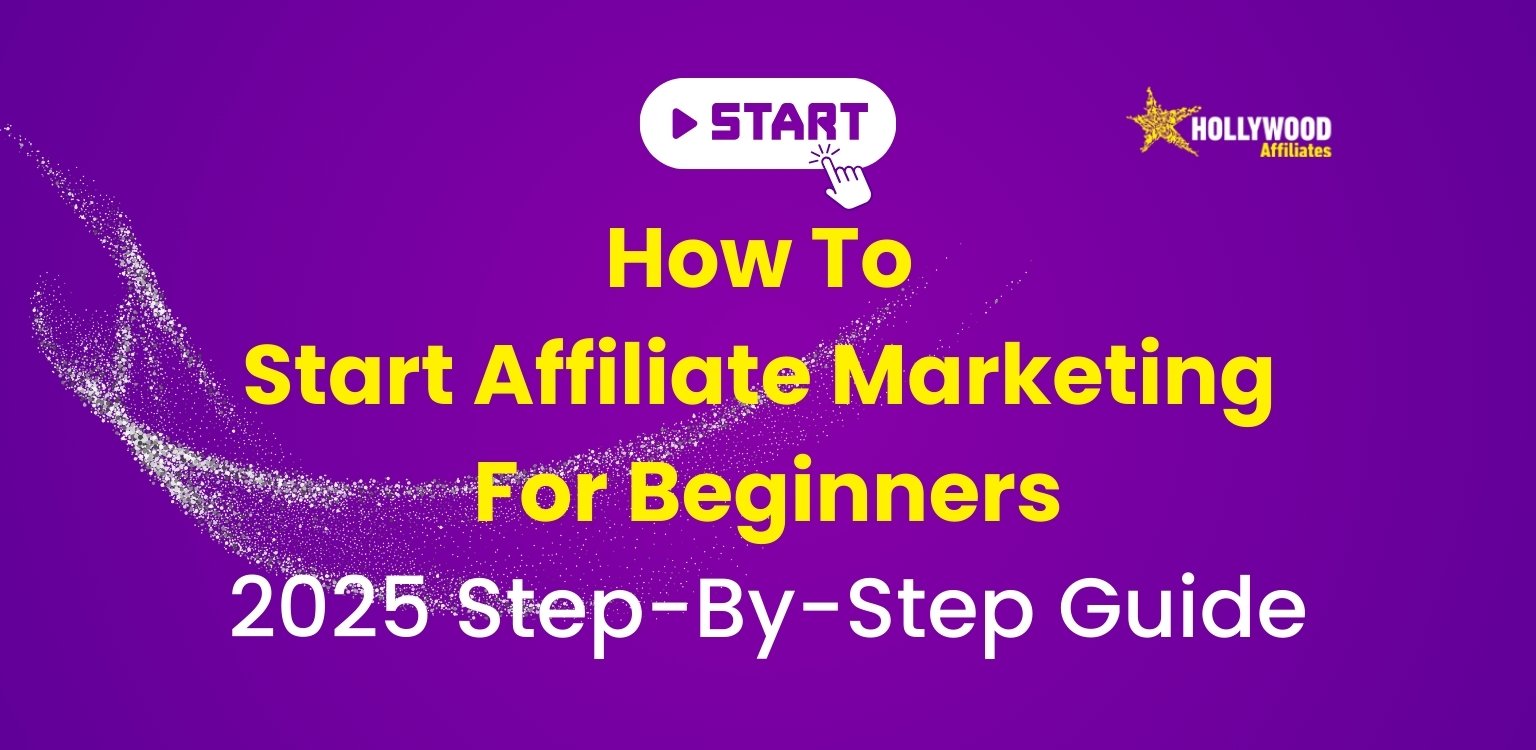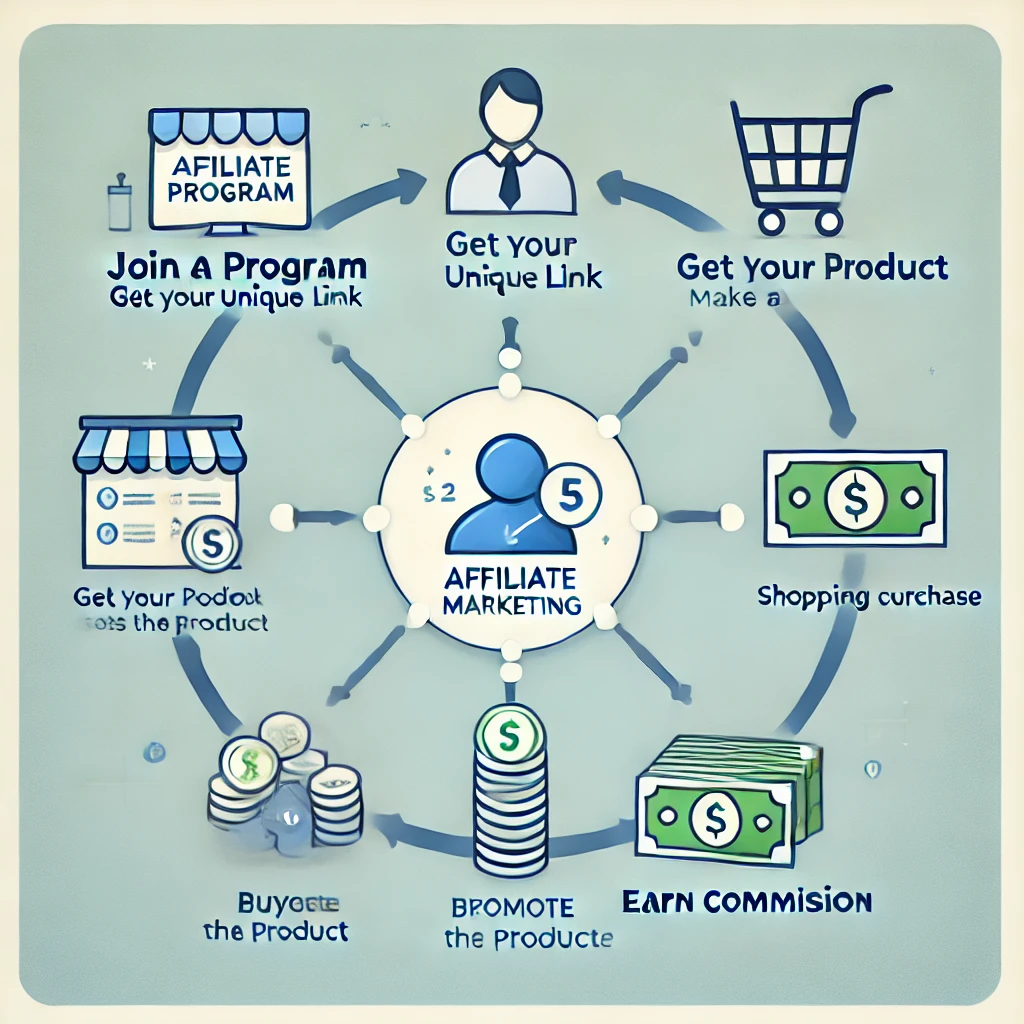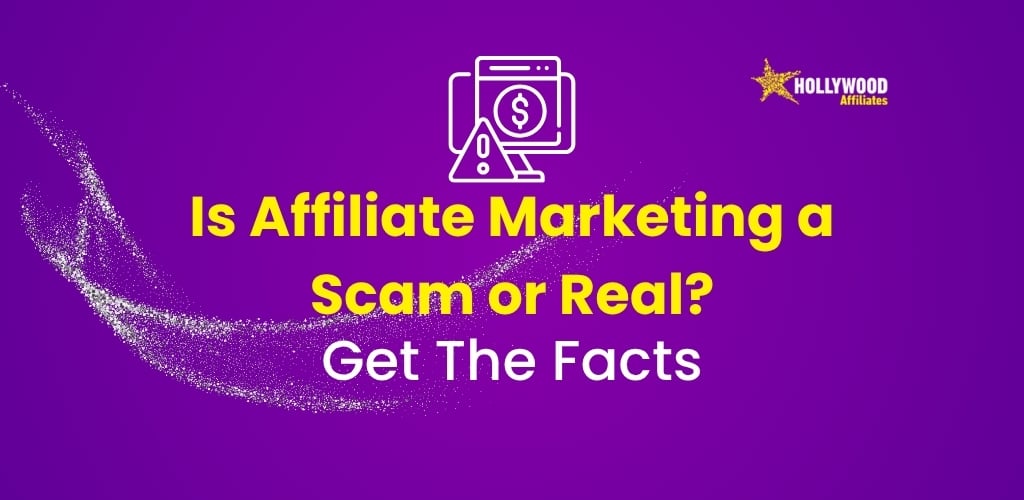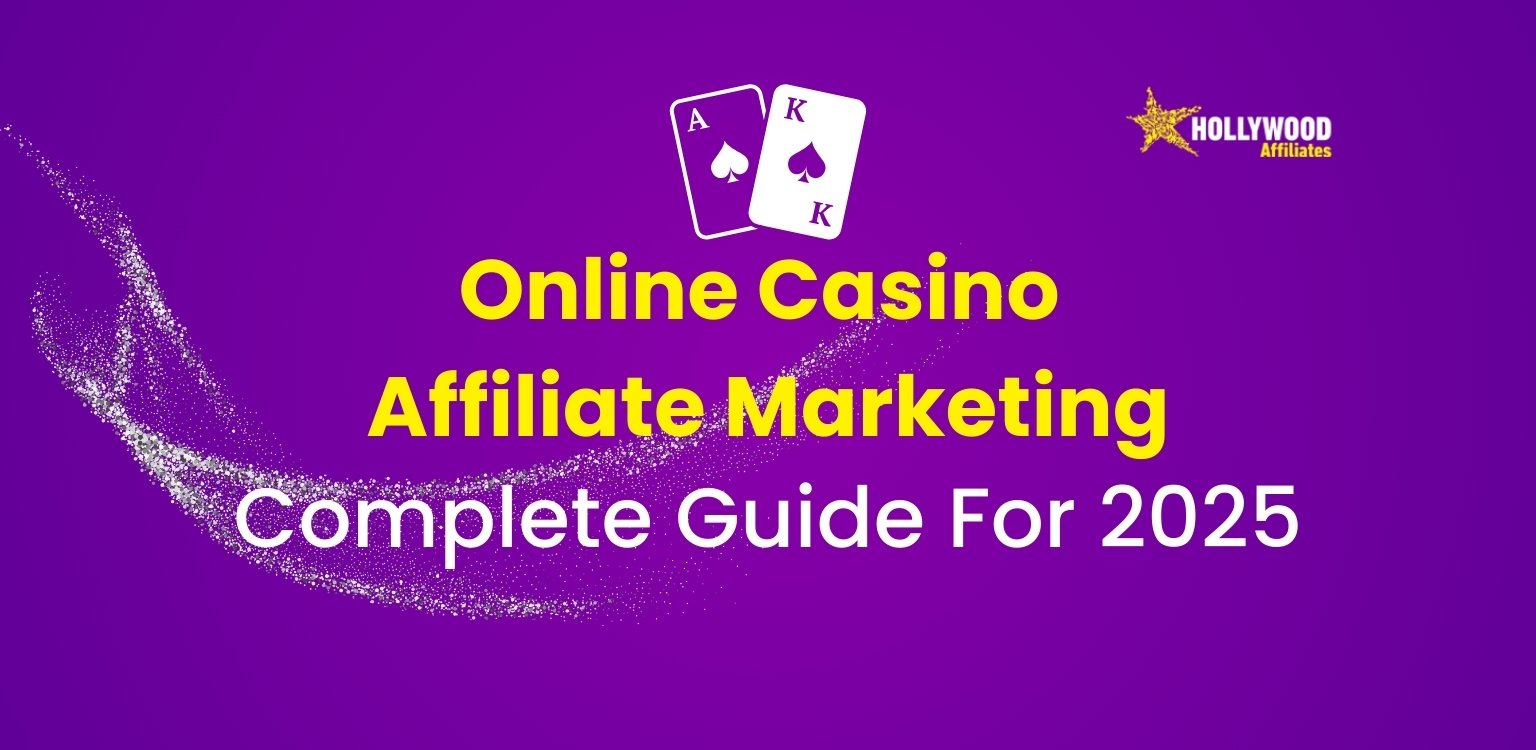How To Start Affiliate Marketing For Beginners In 2025: Follow Our Step-by-Step Guide

Understanding how to start affiliate marketing as a beginner in 2025 will help make the journey all the more rewarding, especially if you follow the right steps and strategies.
With traditional marketing becoming less effective, affiliate marketing has turned into a multibillion-dollar industry that offers beginners an exciting way to start a side hustle. And the good news is that many affiliate marketing programs are free to join, so you won’t have looming overheads to start your journey.
This beginner’s guide will help you learn how to choose an affiliate program, create affiliate links, and start earning.
Table of Contents
- Getting Started with Affiliate Marketing for Beginners
- Step 1: Choosing Your Niche
- Step 2: Finding Affiliate Programs
- Step 3: Setting Up Your Platform
- Step 4: Creating Quality Content
- Step 5: Driving Traffic to Your Platform & Promoting Affiliate Products
- Step 6: Tracking and Analysing Performance
- How to Start Affiliate Marketing with No Money
- Frequently Asked Questions (FAQs)
- Sources
Getting Started with Affiliate Marketing for Beginners
If you’ve ever watched an influencer promote a product online, you’ve watched how affiliate marketing works. Basically, affiliate marketing is a sales strategy where you earn commissions by promoting products or services for a third party.
In short, the affiliate (that’s you) promotes a product or service from the seller (whoever creates the product or service) to the consumer (buyer). You can promote the product or service via various online channel(s), e.g. create video reviews or tutorials. If the consumer wants to buy, then they click on your affiliate links, which direct them to the seller’s website. Once the purchase is completed, you receive the agreed commission.
As a beginner in 2025, this model offers flexibility, scalability, and the potential to generate passive income.
Here’s how it works in practice.
- First, you join an affiliate program.
- Next, the company you choose gives you a unique link to track your sales.
- Then, you promote the company’s product on your website, social media, YouTube channel, or via email (with the affiliate link)
- A potential buyer clicks the link.
- The buyer makes a purchase.
- The affiliate company records the transaction.
- You are paid the agreed commission.
Read this post for a complete explanation on how affiliate marketing works.

Let’s break down the process step-by-step.
Step 1: Choosing Your Niche
Your niche is the foundation of your affiliate marketing business. This helps you target a specific audience and dominate a piece of the market, reducing competition in the busy online space.
Use tools like Partner Matrix or Google Trends to identify gaps in the market and ensure demand, then aim for a niche with a good balance between demand and competition. This way you can establish yourself as a credible expert and become the go-to for your specific audience and product.
To choose the right niche, focus on areas you’re passionate about—for example, if you love cooking, promote kitchen gadgets or meal-prep services. Running an affiliate business takes commitment and time, so loving what you promote will help you stay motivated and enable you to speak about your endorsement with authority. This is important as you have to build trust and credibility to connect with your audience. Here is a guide specifically on how to find the best niche for affiliate marketing.
Once you’ve narrowed it down, then research the available affiliate programs and choose one with good commission rates to maximise your earning potential.
Step 2: Finding Affiliate Programs
When researching affiliate programs, start by looking at company websites that align with your niche. If the company offers an affiliate program, you will find the details under the affiliate section of the site. Try to join affiliate networks that connect multiple brands and pay good commissions, then sign up to start earning.
Only work with partners that customers trust and have a good reputation. Popular global affiliate networks include:
- Amazon Associates – Ideal for physical products.
- ShareASale – Covers various industries. (Recently acquired by Awin)
- CJ Affiliate (Commission Junction) – Offers high-quality brands.
We’ve already done some research for you and reviewed a whole bunch of affiliate programs for you. If you’re just starting out then we recommend high converting affiliate programs because they give you the best chance at actually getting a sale and earning commission.
Step 3: Setting Up Your Platform
You need a platform where you’ll create content and promote the products or services you want to market. It’s best to start where you are most comfortable – some affiliates use social media pages on Instagram, TikTok, or Pinterest. Others prefer Facebook or You Tube which offers its own affiliate marketing program provided you meet specific criteria.
A website is a popular option and beginners can set this up with free tools like WordPress.com or SquareSpace. This is the perfect platform for comparing products, publishing tutorials, buyers guides or blogs to help potential buyers make a decision. Remember, it’s important to invest in a domain name that relates to your niche for credibility.
An example of this is Michelle Schroeder-Gardner’s “Making Sense of Cents” site where she earns from Amazon affiliates as part of her income reports. Here is an example of article “How I Made Over $1,500,000 In One Year.“
Here’s a step-by-step guide on how to create a website for affiliate marketing.
Step 4: Creating Quality Content
Did you know that today 9 out of 10 customers use reviews as a critical factor in their purchasing decision? Over 60 percent of affiliate marketers use blogs to provide reviews or compare products. But you can rely just on social media to promote products – YouTube or TikTok videos are popular options and social media posts are effective to share quick tips with affiliate links.
The key is to create quality content to build trust with your audience. To do this you have to catch their attention with engaging content that positions you as an expert and seamlessly includes affiliate links.
Step 5: Driving Traffic to Your Platform & Promoting Affiliate Products
Without traffic, even the best content won’t convert. So, once you have content, focus on increasing visibility and conversions with the following:
SEO
Search Engine Optimisation (SEO) is essential for driving organic traffic to an affiliate marketing blog or site. It helps increase your website to rank higher on Google searches to bring more consumers without paid ads. It also helps you to target buyers through keywords like “Best laptops under $1000.” Using hooks with the keywords will improve your chance of capturing the buyers attention, e.g. “This $50 gadget replaced ALL my kitchen tools – here’s why!”
Beyond keywords, SEO enhances user experience with fast-loading pages, mobile-friendly content and helps potential customers to purchase more easily.
Social Media
To drive traffic to your affiliate marketing platform using social media, focus on creating engaging content that resonates with your target audience. Share valuable tips, product reviews, or special promotions related to the affiliate products you’re promoting.
Use a mix of posts, stories, and videos to maintain variety and keep followers interested. Leverage relevant hashtags to expand your reach and engage with your audience by responding to comments and messages. Collaborate with influencers or run targeted ads to boost visibility and drive traffic.
By consistently posting engaging content and building a strong social media presence, you can attract more visitors to your affiliate platform and increase conversions. Also follow and tag existing influencers to increase traffic to your social media pages or website.
If you’re considering a social media platform, we’ll show you how to do affiliate marketing on Facebook in our 2025 step-by-step guide. We’ll even show you how to do it on Pinterest without a website.
Email Marketing
This is a great tool for building relationships and increasing sales. Affiliates use email campaigns to promote products or services. They share useful content, special offers, and affiliate links with their audience. These emails can be customised for specific groups.
They encourage readers to take action, such as buying a product or signing up for a service. By adding affiliate links in the emails, affiliates earn money from any sales or leads. Email marketing also helps affiliates gain trust and stay in touch with their audience. This builds long-term connections and repeat business.
Read this post to learn how to build and email list for affiliate marketing in 2025.
Video Marketing
To drive traffic to your affiliate marketing platform with video marketing, create engaging videos that highlight the benefits of the products or services you are promoting. Focus on educating your audience, providing reviews, tutorials, or demonstrations that show how the product works and why it’s valuable.
Share these videos on platforms like YouTube, Instagram, TikTok, or Facebook to reach a wider audience. Use compelling calls to action in your videos, directing viewers to click on your affiliate links. You can also optimize your videos with relevant keywords and descriptions to improve visibility.
By delivering valuable content in video form, you can build trust with your audience and drive traffic to your affiliate platform.
More Traffic Sources
For even more ways to get traffic read our post on the best traffic sources for affiliate marketing, unlock the potential to drive massive, targeted traffic to your offers and watch your commissions soar.
Step 6: Tracking and Analyzing Performance
Measuring your success helps refine strategies and boost affiliate income. Use free tools like Google Analytics or affiliate dashboards to track clicks and sales. If a blog post about “Top Gaming Headsets” isn’t converting, tweak the call-to-action or test different affiliate links. Data helps you refine your strategy to improve your performance.
- Affiliate Links Tracking: Use our free affiliate link checker tool to ensure your affiliate links are working properly so you don’t lose any commission from a sale.
- Performance Metrics: Monitor clicks, conversion rates, and affiliate commissions. To calculate how well your affiliate marketing campaigns are performing use our free affiliate marketing calculator.
- Optimise Strategies: Adjust content and promotion tactics based on data insights.
How to Start Affiliate Marketing with No Money
To start affiliate marketing with no money, you need to get an affiliate link and send it to people. But you won’t make money until you network and build a trusted reputation with your audience.
The first step to setting up your business is to establish a niche. This won’t cost a cent but will require time and effort and is probably the most challenging part of the journey. You can either pick a niche you’re already interested in or look for good affiliate programs first and select your niche based on those programs. Ultimately, you need to choose something you are interested in, have some level of expertise in or are willing to learn about, as you are going to spend years writing content about this to build a profitable business.
The next step is to make sure your chosen niche is in high demand and has little competition – which is easier said than done. To figure this out, you can research your niche with tools like Google Trends or Ubersuggest to see what is in demand.
Once you have an idea of what is in demand, you need to whittle this list down to those with little competition so you improve your chances of success. Tools like SEMrush and Ahrefs offer free trials that will help you analyse competition levels.
Then, take your shortlist and investigate which option offers an affiliate program that offers a good product and good commission to maximise your earning potential.
Once you settle on your niche, you need to draw potential buyers to your chosen platform. Here, it’s important to write high-quality, engaging content to catch the buyers’ attention. Try to create your content with a focus on one channel (e.g.), and then use the others to support that channel. It gets overwhelming to manage YouTube, Instagram, TikTok, Facebook, Pinterest, and a blog.
Here’s a breakdown of the various channels you can use that don’t cost money:
- Email marketing – Create a list of subscribers and then use emailers to promote affiliate link products and services. The newsletters can be distributed with the help of Mailchimp, and there is a free plan as well.
- YouTube – Make sure that your videos are engaging, informative and relevant to your niche. Add the affiliate link to the video’s description, and tell people to check out the products or services that you are recommending.
- Social Media: Since Pinterest and TikTok are visual and viral social networks, you can generate eye-catching pins and short, entertaining videos related to affiliate products and append your affiliate links in the pin or video descriptions or comments.
Conclusion
By following this step-by-step guide, you can successfully start your affiliate marketing journey in 2025 and build a sustainable source of affiliate income. Ready to launch your affiliate journey? Subscribe to our newsletter for weekly tips and share your questions in the comments below!
Frequently Asked Questions (FAQs)
Q: What is affiliate marketing for beginners?
A: Affiliate marketing involves promoting a product or service and earning a commission for every sale made through your referral links. It’s a great way to generate passive income online.
Q: How do I start affiliate marketing with no money?
A: You can start by using free platforms like WordPress, leveraging social media, and joining free affiliate programs. Focus on content marketing and organic traffic growth.
Q: What are the best affiliate programs for beginners?
A: Some beginner-friendly affiliate marketing programs include Amazon Associates, ShareASale, CJ Affiliate, and ClickBank. In South Africa, try Faithful to Nature, Mantality, Mr Price or Netflorist. These platforms offer easy-to-use interfaces and a wide range of products.

Ruaan Kleynhans
Senior Affiliate Marketing Specialist
Fueled by a passion for performance and precision, this seasoned professional has carved a niche in the fast-paced world of online gambling and casino marketing. With years of hands-on experience as a Key Affiliate Account Manager, he blends deep industry knowledge with cutting-edge digital marketing strategies to deliver outstanding results. Renowned for his ability to nurture VIP casino clients and harness analytics for actionable insights, he brings a data-driven mindset to every challenge.






